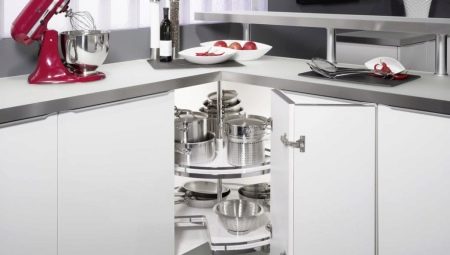Kitchen sets can be equipped with furniture of various configurations. Among the popular options for modern furniture products, corner cabinets, presented in various forms, deserve special attention.
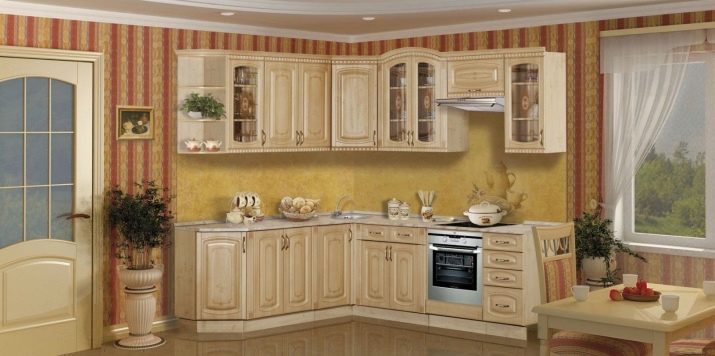
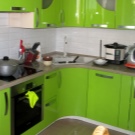
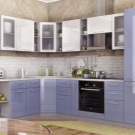
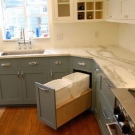
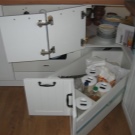

Features, pros and cons
Corner elements of the kitchen set are a rather popular version of the components, thanks to which it is possible to rationally use the useful square meters of the kitchen. These designs are made from different materials, in popular classic or modern stylistic directions. This feature allows you to attribute elements of kitchen sets to universal options suitable for almost any kitchen.
Despite the apparent uniformity of such furniture, the manufacturers presented it in various types and sizes.
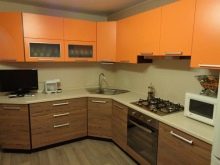

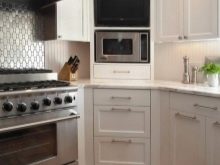
Among the positive features of corner cabinets for the kitchen are the following.
- Placement of such a design makes it possible to use the entire kitchen area, including unused corners, as efficiently as possible.
- Despite the fact that the angular elements of the headset look visually small, the interior is notable for its spaciousness and versatility. This is due to the ability of the furniture to accommodate unusual and convenient systems for storing small items and non-standard kitchen utensils.
- Dimensions regarding the height, width and depth of the lower kitchen corner cabinets are distinguished by variety, in light of which it will turn out to choose the best option for any needs, taking into account the characteristics of the room.
- Corner structures can be decorated with various variations of the facades. To decorate the sashes, it will be possible to use combined options, artificial and natural materials, which positively affects the external design of the kitchen.
- Corner cabinet in the kitchen floor or hanging type is already an integral part of the furniture. In light of which, all elements of the kitchen, even of a curved type, will together look harmonious and stylish.
- In open cabinets, various decorative objects, services, etc. look beautiful.
- Corner cabinets are distinguished by the variety of their shapes, this feature will allow you to choose the design for the features of the room, which will be relevant for non-standard layouts of kitchens.
- The corner components of the lower tier are often used as a cabinet for washing. Also in the corner elements you can embed household appliances of various sizes.
- Floor corner cabinets can be not only stationary on legs, but also mobile, suggesting the presence of wheels at the bottom. A similar feature makes it possible to use some elements of the headset in different corners of the room.
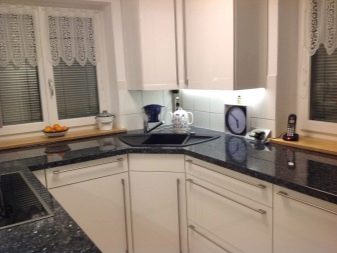
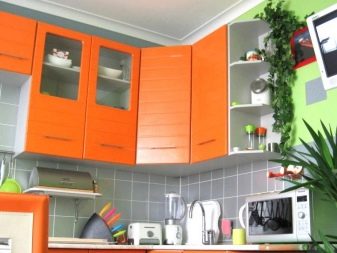
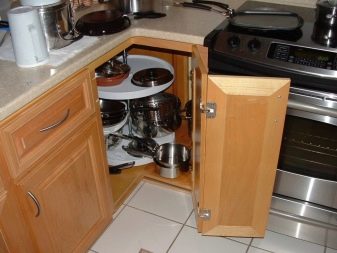
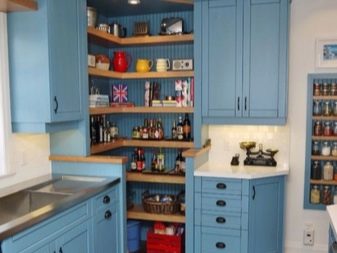
Among the disadvantages of non-standard corner cabinets are the following.
- Such designs can cost more than standard direct cabinets in light of the features of their design.
- In most cases, internal filling will require a special approach. Interesting roll-out or carousel options will be more functional in comparison with straight shelves or drawers.
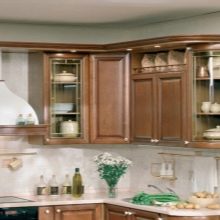
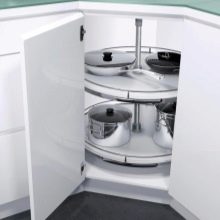
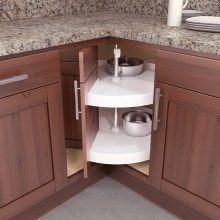
Kinds
Based on the method of placing the structure in the kitchen, You can meet the following varieties.
- Mounted Corner Structures, which can be like vertical pencil cases, with a height reaching the border of the upper components of the headset. In addition, such models can be made in the form of shelves horizontally attached to the surface of the wall.
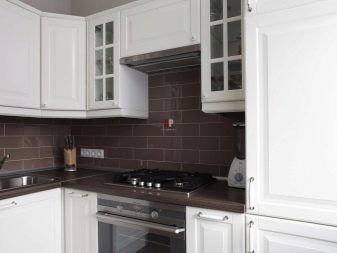
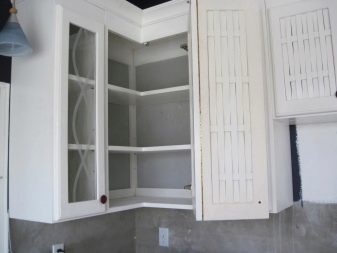
- Floor corner models. They are cabinets made of one or more materials. The internal filling may consist of various shelves, drawers and cutting-edge systems. As for the flaps, most often they open like a book-door or “accordion”.
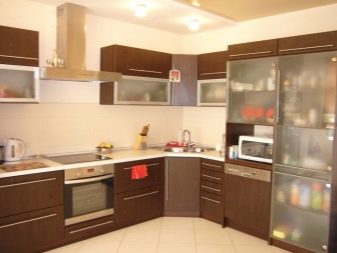
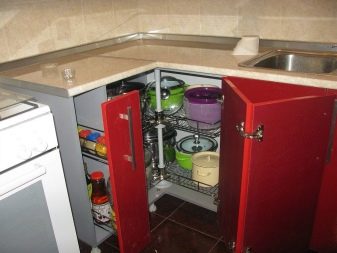
Given the structure of the cabinets, corner options are classified as follows.
- Right Angle Variations - It is this design that is considered the most popular for picking headsets. The facades of such cabinets can be open or blind. Usually standard direct cabinets are attached to these elements.
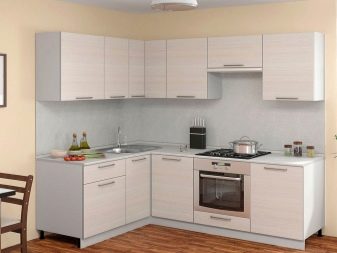
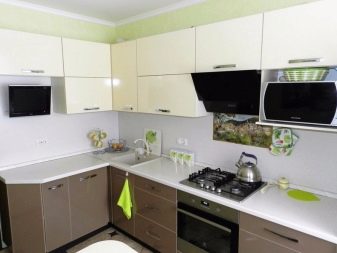
- Box with a joint located at an angle of 45 degrees. Such varieties are considered the most capacious. However, the design features allow you to install it in spacious kitchens.
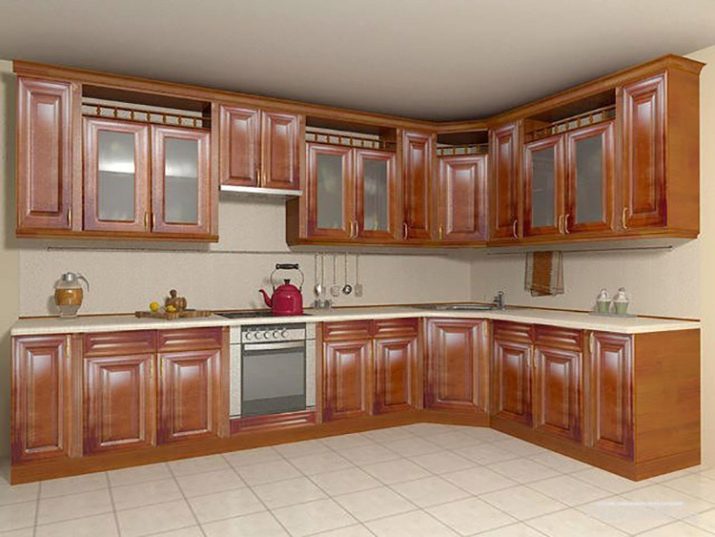
- Corner cabinets with a top joint at 90 degrees. To get the most functional design of this type, its facade should be presented in the form of an accordion-like opening system.
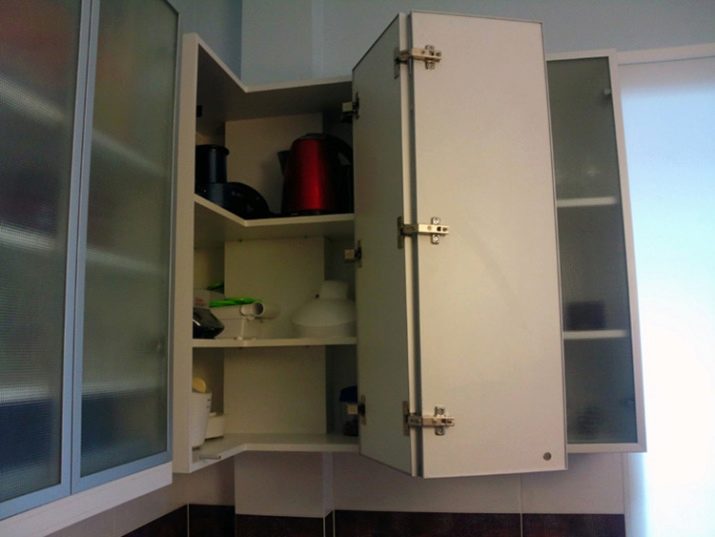
- Varieties of cabinets with a top joint of the frame, representing an angle of 45 degrees. Very large design, which is suitable for kitchen-living rooms, as well as large rooms. Typically, this component is used as an additional hinged module for storing dishes and other necessary things.
Very often you can find interiors where such a cabinet will be located above the kitchen sink.
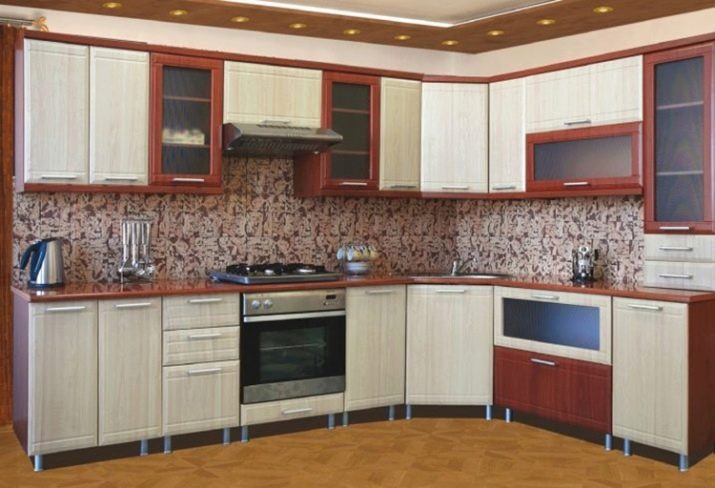
Shapes and sizes
Taking into account the features of the forms of corner cabinets for kitchens, it is worth highlighting such variations of furniture.
- Triangular patterns, which are considered to be a classic option. Their positive feature is a spacious interior space, however, from the point of view of ease of access to various necessary items or products stored inside, they do not differ in special comfort. Very often, such cabinets are equipped with hinged systems for storing things that are attached directly to the wings.
Internal filling may also include retractable or pivoting shelves.
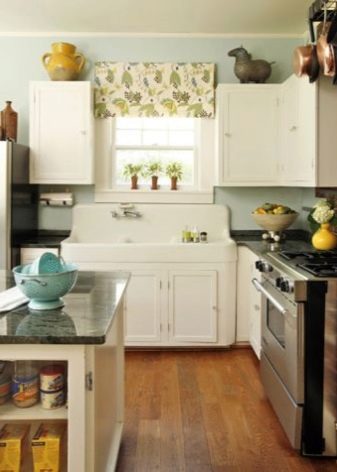
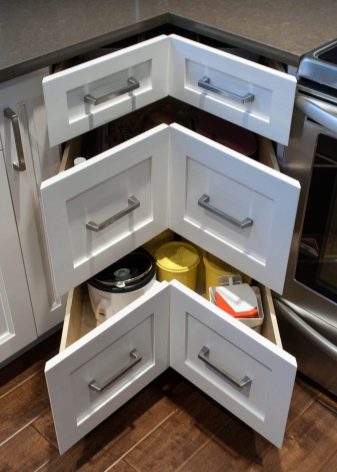
- Corner trapezoidal cabinets. They resemble regular pentagonal cones, which will be distinguished by an increased level of functionality, since the internal space allows you to place a large number of different objects and things.
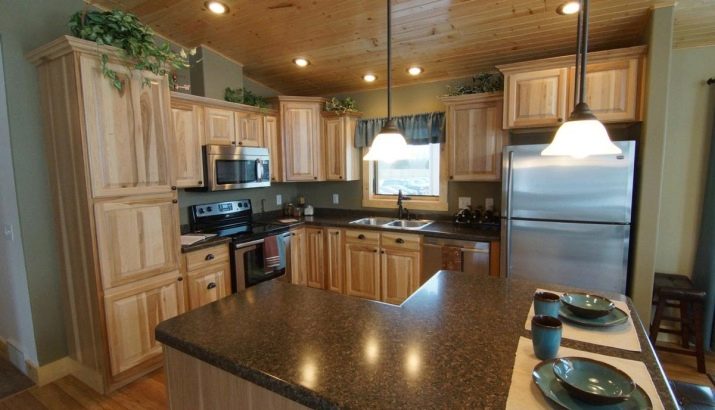
- Cabinets with L-shaped configuration. In most cases, this option is suitable for storing kitchen utensils.

The sizes of corner cabinets, regardless of their shape, can be different. In the case when they act as a unifying element of the kitchen set, the dimensions of the structures will directly depend on the remaining kitchen furniture. Dimensions also vary based on the type of placement, in particular, floor or hanging cabinets.
Hinged structures do not stand out for their large size, so it is extremely rarely used to accommodate embedded equipment. As a rule, the width of the cabinets varies in the range from 15 to 80 centimeters. Depth is usually 30–35 centimeters. Usually hinged corner structures are placed at a distance from the lower structures by at least 50 centimeters, however, this indicator may have an error in the region of 5-10 centimeters. These parameters are considered standard for hinged corner cabinets, however, headsets made to individual size for the particular layout of kitchen facilities may have other dimensions. There are options for small cabinets that are built into a niche, which is important for small rooms. Such constructions can be used for storing skimmers, knives, spoons and small dishes. You can also find open-type models.
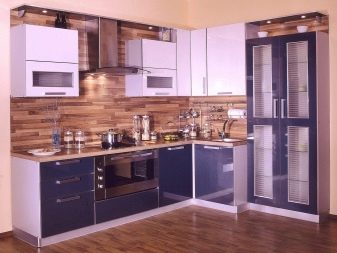

The standard parameter for floor corner cabinets is the height similar to the rest of the kitchen set, as well as located household appliances, such as a stove, most often serving as a continuation of the countertop. Usually, the depth of the cabinets is 50 centimeters, while the height of the standard component will vary between 80–85 centimeters. However, in most products it is possible to adjust this indicator, since for most housewives it will be too large. The width of the cabinets varies greatly - for example, some corner models can have a width of 15 centimeters, while the maximum figures can reach 80 centimeters. The average width of the furniture will be 60 centimeters.
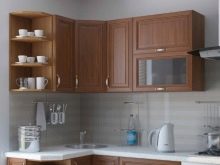
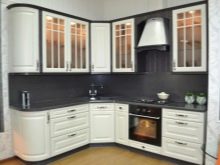
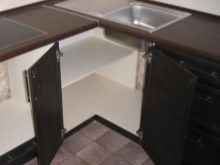
Materials
In the role of the main raw material from which the corner furniture for the kitchen is made, in most cases, the following materials appear:
- natural wood;
- multiplex;
- Chipboard;
- MDF.
As for natural wood, about 40 varieties can be used for furniture production; all of them undergo mandatory processing with special protective compounds that extend the operational life of the sets.
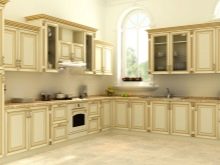
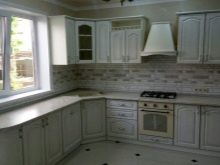
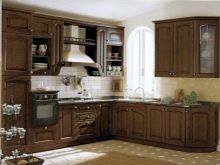
Multiplex is considered a popular variety of the latest generation of raw materials used for the production of kitchen furniture. It is distinguished by resistance to temperature effects, contact with a humid environment, is completely safe for human health.
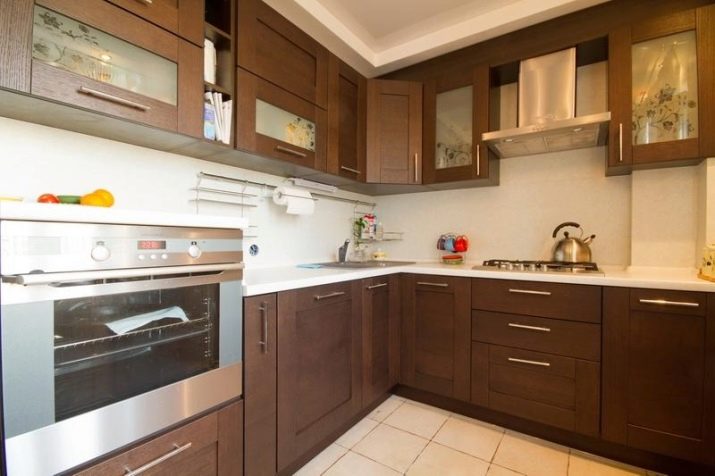
MDF is considered the most demanded material - in comparison with chipboard, it is notable for its environmental friendliness, in addition, it does not deform due to high humidity or heating.
Particleboard during thermal heating can emit formaldehyde, which can cause a person to feel unwell.
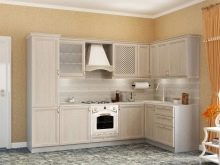
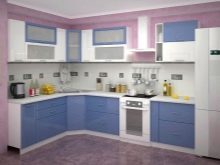
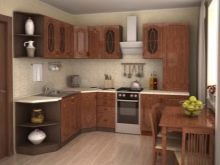
Color schemes
Corner cabinets for kitchens are made in a variety of colors ranging from standard shades of wood or light pastel colors to trendy bright options, popular among modern furniture products.
Facades may have a glossy or matte finish. Depending on the type of raw materials used, the texture of the facade can be embossed.
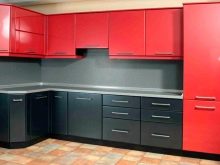
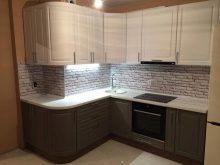
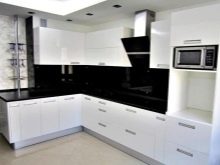
How to choose?
The choice of one or another variety of corner furniture designs will depend on the following factors:
- it is important to decide what will be stored in the future in order to have an idea of the dimensions of the required design;
- if you plan to store tall and heavy objects, it is better to dwell on options with thick shelves in the range of 18–20 mm;
- the optimal and comfortable depth for using the cabinet will be an indicator within 37 or 40 cm;
- if you plan to place corner cabinets with beveled corners near the stove, you should avoid having decorative inserts made of polymers or chipboard on the facade, which can seriously deform from high temperature.

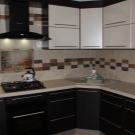
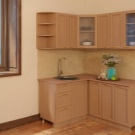
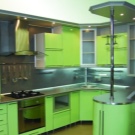
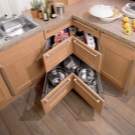
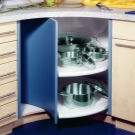
Interesting options
Even the narrow corner space in the kitchen can be functionally used, if you pay attention to the filling, where attractive and functional boxes located at right angles will be used.
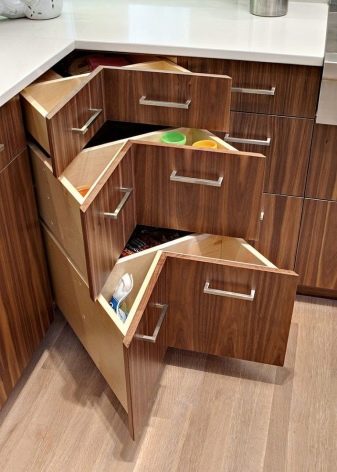
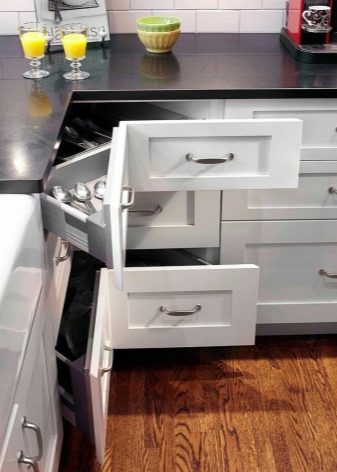
Modern retractable systems will help to rationally use the corner area, and the appearance of such furniture will correspond to modern fashion trends.

Corner pencil cases can act as a stand-alone element or be placed in a row with the rest of the furniture. In any case, this option will look attractive, and the interior space will be useful in the kitchen.
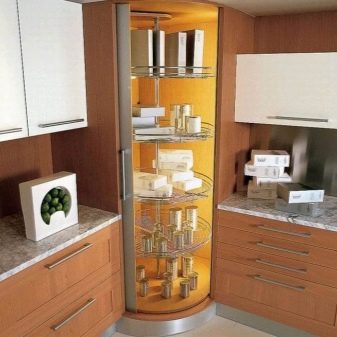
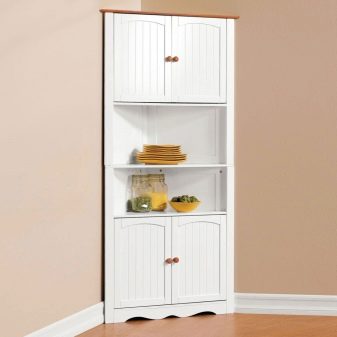
See the next video for an overview of the corner kitchen.
